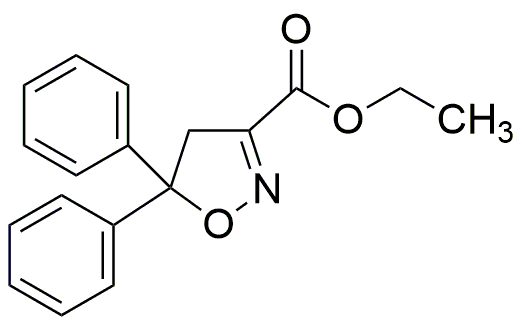Isoxadifen-ethyl is widely utilized in research focused on:
- Agricultural Herbicide: It serves as a selective herbicide, effectively controlling broadleaf weeds in various crops, which helps farmers enhance crop yields and reduce competition for nutrients.
- Crop Protection: This compound is used in formulations that protect crops from pests and diseases, contributing to sustainable agriculture by minimizing the need for more harmful chemicals.
- Research in Plant Physiology: Researchers use Isoxadifen-ethyl to study plant responses to herbicides, providing insights into resistance mechanisms and aiding in the development of more effective weed management strategies.
- Environmental Safety Studies: Its application in studies assessing the environmental impact of herbicides helps in understanding the degradation pathways and potential ecological risks associated with its use.
- Formulation Development: The compound is valuable in the formulation of advanced agrochemicals, allowing for the creation of products that are both effective and environmentally friendly, addressing the industry's shift towards sustainable practices.
General Information
Properties
Safety and Regulations
Applications
Isoxadifen-ethyl is widely utilized in research focused on:
- Agricultural Herbicide: It serves as a selective herbicide, effectively controlling broadleaf weeds in various crops, which helps farmers enhance crop yields and reduce competition for nutrients.
- Crop Protection: This compound is used in formulations that protect crops from pests and diseases, contributing to sustainable agriculture by minimizing the need for more harmful chemicals.
- Research in Plant Physiology: Researchers use Isoxadifen-ethyl to study plant responses to herbicides, providing insights into resistance mechanisms and aiding in the development of more effective weed management strategies.
- Environmental Safety Studies: Its application in studies assessing the environmental impact of herbicides helps in understanding the degradation pathways and potential ecological risks associated with its use.
- Formulation Development: The compound is valuable in the formulation of advanced agrochemicals, allowing for the creation of products that are both effective and environmentally friendly, addressing the industry's shift towards sustainable practices.
Documents
Safety Data Sheets (SDS)
The SDS provides comprehensive safety information on handling, storage, and disposal of the product.
Product Specification (PS)
The PS provides a comprehensive breakdown of the product’s properties, including chemical composition, physical state, purity, and storage requirements. It also details acceptable quality ranges and the product's intended applications.
Certificates of Analysis (COA)
Search for Certificates of Analysis (COA) by entering the products Lot Number. Lot and Batch Numbers can be found on a product’s label following the words ‘Lot’ or ‘Batch’.
*Catalog Number
*Lot Number
Certificates Of Origin (COO)
This COO confirms the country where the product was manufactured, and also details the materials and components used in it and whether it is derived from natural, synthetic, or other specific sources. This certificate may be required for customs, trade, and regulatory compliance.
*Catalog Number
*Lot Number
Safety Data Sheets (SDS)
The SDS provides comprehensive safety information on handling, storage, and disposal of the product.
DownloadProduct Specification (PS)
The PS provides a comprehensive breakdown of the product’s properties, including chemical composition, physical state, purity, and storage requirements. It also details acceptable quality ranges and the product's intended applications.
DownloadCertificates of Analysis (COA)
Search for Certificates of Analysis (COA) by entering the products Lot Number. Lot and Batch Numbers can be found on a product’s label following the words ‘Lot’ or ‘Batch’.
*Catalog Number
*Lot Number
Certificates Of Origin (COO)
This COO confirms the country where the product was manufactured, and also details the materials and components used in it and whether it is derived from natural, synthetic, or other specific sources. This certificate may be required for customs, trade, and regulatory compliance.


